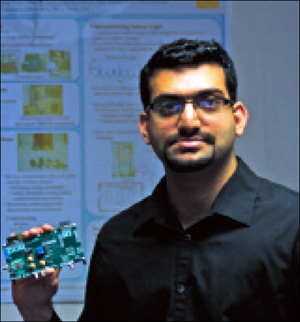When someone experiences head trauma, doctors often need to monitor the temperature and pressure inside the skull, as these are crucial indicators of the patient’s status. But current sensors require a second operation for removal, a painful and expensive procedure that involves the risk of infection. To eliminate second surgeries, John A. Rogers, a professor of materials science and engineering at the University of Illinois at Urbana-Champaign (UIUC), and Wilson Ray, a professor of neurological surgery at the Washington University School of Medicine, in St. Louis, are developing RF sensors that can transmit the needed data and then be reabsorbed harmlessly into the body.
Rogers and Ray began working on bioresorbable electronics in 2008, and in 2012, they published a paper on how to optimize the materials needed for such devices. Since 2014, they have focused on the clinical utility for bioresorbable electronics. Shortly after they began this work, neurosurgeons at Washington University who treat traumatic brain injuries (TBIs) approached them with a specific request for bioresorbable intracranial monitors.

“We can also measure biomarkers of various types, pH, temperature and flow,” Rogers says. “But it’s important to monitor pressure and temperature during the recovery phase associated with a TBI event. If either of these parameters falls outside a certain healthy range, then the neurosurgeons must make rapid intervention to protect the patient.”
All the intracranial parts of the system are custom-made with bioresorbable electronic materials in UIUC’s academic clean-room facilities. The sensors communicate via a passive Near Field Communication (NFC) transponder, a short-range form of RFID that uses inductive coupling and is not influenced by water in the body. Most of the NFC components can be absorbed into the body without harm.
A startup company has been created to commercialize the research. In the meantime, Rogers and Ray and their research teams are working to build sensors with an improved lifetime (a few weeks instead of a few days) and on rendering the NFC transponder out of 100 percent bioresorbable materials. “We’re looking at several other applications, including bone and nerve stimulators, drug-release systems and temporary pacemakers,” Rogers adds.

